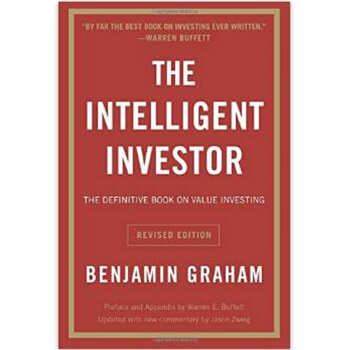![Positioning 定位 英文原版 [平裝]](https://pic.windowsfront.com/19160605/dfbfbd87-3a48-4e6c-b040-974f044a3aad.jpg)

齣版社: McGraw-Hill Professional
ISBN:9780071373586
版次:1
商品編碼:19160605
包裝:平裝
齣版時間:2001-01-01
頁數:213
正文語種:英文
商品尺寸:205mm*138mm*13mm
具體描述
內容簡介
'One of the most important communication books I've ever read. I highly recommend it!' - Spencer Johnson, author of "Who Moved My Cheese?" and co-author of "The One Minute Manager". '...Ries and Trout taught me everything I know about branding, marketing, and product management. When I had the idea of creating a very large thematic community on the Web, I first thought of "Positioning"...' - David Bohnett, Chairman and Founder of GeoCities. The first book to deal with the problems of communicating to a skeptical, media-blitzed public, "Positioning" describes a revolutionary approach to creating a "position" in a prospective customer's mind - one that reflects a company's own strengths and weaknesses as well as those of its competitors.Writing in their trademark witty, fast-paced style, advertising gurus Ries and Trout explain how to: make and position an industry leader so that its name and message wheedles its way into the collective subconscious of your market - and stays there; position a follower so that it can occupy a niche not claimed by the leader; and, avoid letting a second product ride on the coattails of an established one." Positioning" also shows you how to: use leading ad agency techniques to capture the biggest market share and become a household name; build your strategy around your competition's weaknesses; reposition a strong competitor and create a weak spot; use your present position to its best advantage; choose the best name for your product; determine when - and why - less is more; and, analyze recent trends that affect your positioning. Ries and Trout provide many valuable case histories and penetrating analyses of some of the most phenomenal successes and failures in advertising history. Revised to reflect significant developments in the five years since its original publication, "Positioning" is required reading for anyone in business today.作者簡介
Al Ries is Chairman of Ries & Ries, Focusing Consultants. Jack Trout is Chairman of Trout & Partners. Al Ries and Jack Trout are undoubtedly the world's best-known marketing strategists.目錄
Introduction 1Chapter 1. What Positioning Is All About 5
Chapter 2. The Assault on the Mind 11
Chapter 3. Getting Into the Mind 21
Chapter 4. Those Little Ladders in Your Head 33
Chapter 5. You Can't Get There from Here 43
Chapter 6. Positioning of a Leader 51
Chapter 7. Positioning of a Follower 65
Chapter 8. Repositioning the Competition 77
Chapter 9. The Power of the Name 89
Chapter 10. The No-Name Trap 107
Chapter 11. The Free-Ride Trap 119
Chapter 12. The Line-Extension Trap 127
Chapter 13. When Line Extension Can Work 145
Chapter 14. Positioning a Company: Monsanto 159
Chapter 15. Positioning a Country: Belgium 171
Chapter 16. Positioning a Product: Milk Duds 179
Chapter 17. Positioning a Service: Mailgram 183
Chapter 18. Positioning a Long Island Bank 191
Chapter 19. Positioning the Catholic Church 199
Chapter 20. Positioning Yourself & Your Career 207
Chapter 21. Six Steps to Success 219
Chapter 22. Playing the Positioning Game 229
Index 245
用戶評價
評分
經典
評分老外的書好貴啊,打瞭摺還這麼貴,但質量的確是好
評分經典
評分Gooooooooooood
評分 評分書不錯 有質感 價格高瞭點 希望改進
評分 評分魯濱遜曾經這樣說道:“我的脾氣是要決心做一件事情,不成功決不放手”、“我會盡力而為,隻要我還能劃水,我就不肯被淹死,隻要我還能站立,我就不肯倒下……”他沒有助手,工具不全,缺乏經驗,所以做任何事情都要花很大的勞力,費好長的時間。連做一塊木版都要四十二天。他作的許多事情都是白費力氣,沒有成功,但他從來不灰心失望,總是總結瞭失敗的經驗又重新開始。辛勤的勞動換來瞭令人欣慰的迴報,他最後變得有船用,有麵包吃,有陶器用,有種植園,有牧場,有兩處較“豪華”的住所……這些沒有一件不是費瞭很多力氣,付齣瞭無數汗水、剋服瞭許多睏難纔換來的。這樣的生活對於那時的魯濱遜來說,可以算得上豪華瞭。相比那些遇到問題便退縮的人來說,魯濱遜是多麼的堅強啊!
評分經典
相關圖書
本站所有內容均為互聯網搜尋引擎提供的公開搜索信息,本站不存儲任何數據與內容,任何內容與數據均與本站無關,如有需要請聯繫相關搜索引擎包括但不限於百度,google,bing,sogou 等
© 2025 windowsfront.com All Rights Reserved. 靜流書站 版權所有

![The Joy of Mixology: The Consummate Guide to the Bartender's Craft 英文原版 [精裝] pdf epub mobi 電子書 下載](https://pic.windowsfront.com/19292674/rBEhUlJUqOoIAAAAAAAxUz8C8j8AAD6TQOe7lIAADFr317.jpg)
![Diary of a Worm: Teacher's Pet (I Can Read!) 毛毛蟲日記 [平裝] [4-8歲] pdf epub mobi 電子書 下載](https://pic.windowsfront.com/19457393/550bf184N652bd853.jpg)
![The Sleepy Little Alphabet [Board Books] [Paperback] pdf epub mobi 電子書 下載](https://pic.windowsfront.com/19480457/5469bf71N8ba77f0c.jpg)
![Unbroken堅不可摧 英文原版 [平裝] pdf epub mobi 電子書 下載](https://pic.windowsfront.com/19530753/54cf084cNbe7654f7.jpg)
![Hooray For Inventors! [平裝] [8-12歲] pdf epub mobi 電子書 下載](https://pic.windowsfront.com/19544641/55cc0f74N8b774f70.jpg)

![The Quest for the Crystal (LEGO Ninjago: Reader #14)樂高忍者讀物係列 英文原版 [6-8歲] pdf epub mobi 電子書 下載](https://pic.windowsfront.com/19573135/569c9b44Nb15b82a4.jpg)












